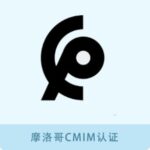

Morocco’s Ministry of Industry, Trade, Green and Digital Economy (MICVN) has implemented a new Verification of Conformity Program for goods imported into the country.
The new program aims to implement a 24-9 law to regulate the security of products and services, supplemented by Decrees No. 02-21 and No. 3873-13. .
Depending on the product, this verification should be carried out in the country of export or when the product arrives at the Moroccan border.
The following are the categories of products that are controlled at the Moroccan border:
Automotive spare parts: tires, batteries, brake pads, automotive glazing, filter elements, mechanical control wires
Construction products: tiles, cement, sealing foils, sanitary products, fittings, plastic pipes and accessories
Wooden panels
Gas equipment: gas stoves, water heaters
Wire and reinforced concrete
Clothing other than work clothes
Electrical products: mobile phone chargers, circuit breakers
Rugs, carpets, carpets and upholstery fabrics
Baby diapers
The categories of products that are controlled and that require verification in the country of export can be found on the MICVN website, for example, electrical equipment within certain voltage ranges and equipment related to electromagnetic compatibility.
Goods that require verification must be accompanied by a Certificate of Conformity (CoC) before they can be exported.
The new Conformity Verification Scheme came into effect on February 1, 2020; however, there is still a transitional buffer period until April 20, 2020, when manufacturers can still export products to Morocco without attaching a CoC.
[Morocco] CMIM Mark is mandatory on 2020/01/01
From January 1, 2020, products affected by the CMIM mark must comply with the following regulations before arriving at customs in Morocco. Failure to do so may result in the withdrawal of the goods. Until now, importers could affix the label after the goods entered customs, but this will not be allowed after August 1, 2019.
The CMIM Mark is mandatory for products that fall within the scope of the Moroccan LVD/EMC Directive. Generally, the directive is similar to that of CE LVD/EMC:
- If the AC power supply of the equipment is in the range of 50-1000 volts or the DC power supply is in the range of 75-1500 volts, the LVD Directive applies.
- If the operating voltage of the product falls within the scope of the LVD Directive, radio communication or telecommunication terminals shall not be exempted.
3- Radio communication equipment and telecommunication terminals are exempted from the EMC Directive
It is the manufacturer’s responsibility to determine whether his product falls under the LVD / EMC Directive. The manufacturer also has the following obligations:
Provide an Arabic SDoC related to Moroccan directives and standards
Keep the relevant technical files for 10 years from the last shipment of the product.
In addition, “Although the EMC / LVD Directive has been in existence for two years, not every product import will be required to have relevant documents at customs for customs clearance. However, our company recommends that manufacturers must still comply with the requirements of the regulations to avoid problems when the product enters Morocco. If the goods are inspected, the customs needs to see the CMIM mark. After that, they may ask for technical files.
The CMIM Label must be marked on the product when the goods enter the customs to avoid customs problems.

